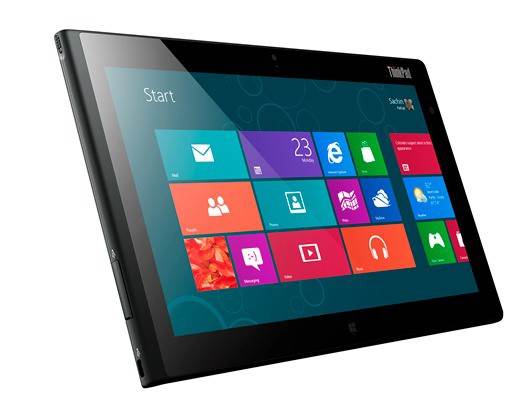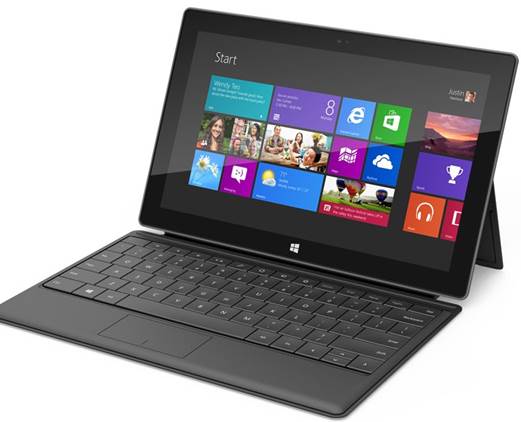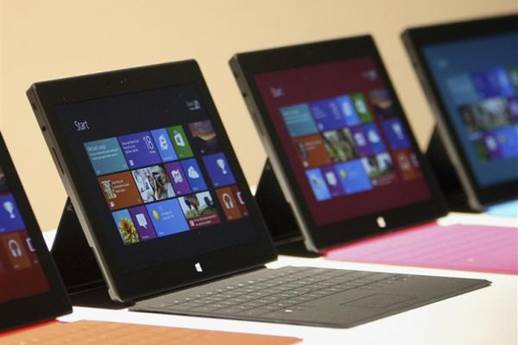Microsoft has launched its ARM-based
Windows 8 RT Surface tablets, and also let slip a snippet of information that
might worry some people: the Office 2013 Home & Student RT edition that
ships with it is for "non-commercial use only".
Many people have condemned this as an
unwarranted restriction, but Microsoft's response is that it expects Surface RT
tablets to be used by private individuals rather than businesses, It claims
that business users needn't worry because they can get around this by buying an
Office 365 subscription commercial use of Office RT on Surface RTs then comes
out of their five-devices-per-user ration or an extra "commercial
use" licence through a volume licence agreement (we don't yet know what
this will cost). For an Office 365 subscription you'd need at minimum Small
Business Premium, at $US150 per user per year, which is a fair sum to use a
Surface RT for business if you don't need or want Office 2013 for your other
PCs.

Windows
8 RT tablets
When this story first broke, Microsoft
"reached out" to several journalists claiming there was "nothing
to see here", but I disagree, In my opinion, either Microsoft doesn't
think Office RT is good enough to be used in business, or else it's trying to
fleece businesses even more heavily to use this new platform by paying for
software they can't use. Of course, it could be both. If I were a small
business with Office 2007 or 2010 already on my desktop PCs, and with no desire
to "upgrade" to Office 365, any urge I might feel to try out a
Windows RT tablet would evaporate immediately in the face of an extra $150 per
user per year.
The RT edition of Office 2013 Home &
Student also lacks Outlook, while its Mail, Calendar and People apps are underwhelming compared to the full versions. Plus,
you can't buy a more extensive edition of Office 2013 or Office 365 for your
Windows 8 RT device since it simply won't install: Office Home & Student RT
is the only ARM version. Buying Office 365 for use on a Windows RT device won't
let you run any more of the main applications either, since Outlook, Access,
Publisher and InfoPath (all included in Office 365 Small Business Premium)
won't run on ARM. And without Outlook on your Surface RT Word, Excel and
PowerPoint can't even have File I Share I Send As Attachment commands. The only
extra bit of Office you'll get to run on your Windows 8 RT device will be Lync
MX, the promised "Modern" UI version of the Lync client.

The
Office 2013 Home & Student RT edition that ships with it is for
"non-commercial use only
If you really want a better version of
Office to run on a tablet, you'll need to buy an Intel x86- or x64-based device
running full Windows 8 which will be heavier, costlier and have shorter battery
life than the ARM devices. Microsoft's Surface Pro devices won't come with
Office installed, but they will run any Windows application so you can install
any version for which you have a proper licence; one bought retail, by volume
licence or subscription, since OEM or Product Key Card licences can't legally
be transferred (even if you're scrapping the older machine). Alternatively, if
you buy an Office 365 subscription, you could take full advantage of its
five-per-user limit by installing one onto your tablet.
Other manufacturers might eventually sell
full Windows 8 tablets with OEM versions of Office 2013 preinstalled, but with
Microsoft pushing Office 365 subscriptions as hard as it can, I suspect the
days of buying a computer with a perpetual (non-transferable) Office licence
are numbered. I wouldn't be at all surprised if OEMs start offering machines
with a one-year subscription to Office 365 instead.
More Office Editions
Microsoft has released details of the other
versions of Office 2013 and Office 365 that we can expect over the coming months.
There will be five Office 2013 editions if you count Home & Student for
Windows RT, and seven editions of Office 365. Office 2013 Standard edition will
cost $US 370, although it still isn't clear what it contains: certainly Word,
Excel, PowerPoint, OneIVote and Outlook, probably Publisher, but not Access,
InfoPath or Lync. While Office 2010 Standard was available only through a
volume licence, it isn't clear if this continues for Office 2013.

Microsoft
has released details of the other versions of Office 2013 and Office 365 that
we can expect over the coming months.
A new Office 365 University Subscription
for higher-education students and staff whose institution doesn't provide an
Office 365 for Education account will cost $US 80 for four years, only $US 20 a
year for all the Office Professional applications, plus Skype time and extra
SkyDrive space (which alone would cost $US 10 per year bought separately). As I
write, Microsoft hasn't confirmed whether this value product will be available
in Australia. A Small Business edition of Office 365 will give you all the
online services without the desktop applications, useful for companies that
already have perpetual Office licences and don't want to fully convert to the
subscription model; no price is yet announced for this or the Office 365 Pro
Plus subscription.
A new Midsize Business edition appears
almost identical to the Small Business Premium edition but will probably add
professional support, Active Directory Synchronisation and a configurable spam
filter. There are conflicting reports of how many users it will permit ranging
from 10 to 250 and it will cost more at $US180 per user per year. I'm
hard-pressed to see how its extra features justify this.